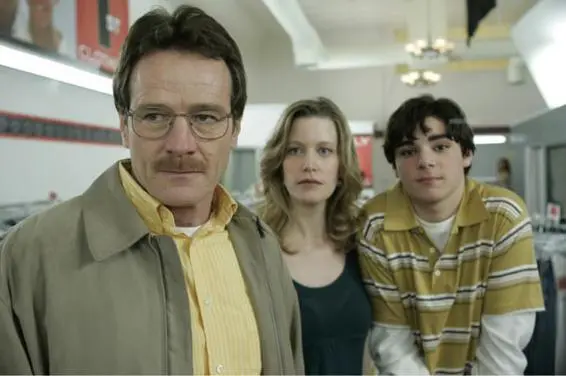Kumar, Manjit. Quantum. Einstein, Bohr and the Great Debate about the Nature of Reality . London: Icon Books, 2009.
Landsman, N. P. “Getting Even with Heisenberg.” Studies in History and Philosophy of Modern Physics . 33. (2002): 297-325.
Lindley, David. Uncertainty. Einstein, Heisenberg, Bohr, and the Struggle for the Soul of Science . New York: Anchor Books, 2008.
Lyon, David, ed. Theorizing Surveillance: The Panopticon and Beyond . Cullompton, UK: Willan, 2006.
Metz, Christian. The Imaginary Signifier: Psychoanalysis and the Cinema . Bloomington: Indiana University Press, 1982.
Price, Derek J. de Solla. Little Science, Big Science . New York: Columbia University Press, 1963.
Skal, David J. Screams of Reason. Mad Science and Modern Culture . New York: Norton & Company, 1998.
Telotte, J. P. “The Dis-Order of Things in Twin Peaks.” In Full of Secrets: Critical Approaches to Twin Peaks, edited by David Lavery. 160-172. Detroit: Wayne State University Press, 1995.
Tziallas, Evangelos. “Torture Porn and Surveillance Culture.” Jump Cut: A Review of Contemporary Media 52. 2010. http://www.ejumpcut.org/archive/jc52.2010/evangelosTorturePorn/index.html.
Weber, Max. 1978. Economy and Society . Berkeley: University of California Press.
Wright, Megan. “Walter White’s Will to Power.” In Breaking Bad and Philosophy: Badder Living through Chemistry, edited by David R. Keopesell and Robert Arp. 81-89. Chicago-LaSalle: Open Court, 2012.
II
The Politics of Breaking Bad

Breaking Bad (AMC). Season 1 Episode 1: “Pilot.” Airdate: January 20, 2008. Shown: Bryan Cranston, Anna Gunn, RJ Mitte.
AMC/Photofest © AMC. Reprinted by permission of Photofest.
Chapter 4
TAKING CONTROL: MALE ANGST AND THE RE-EMERGENCE OF HEGEMONIC MASCULINITY IN BREAKING BAD
Brian Faucette
Man has all too long had an ‘evil eye’ for his natural inclinations, so that they have finally become inseparable from his ‘bad conscience.’
—Friedrich Nietzsche,
Genealogy of Morals (1887)
The image of empty khaki trousers falling against the brilliant blue desert sky, followed by the shot of an out of control Winnebago careening alongside a dirt road in the desert driven by an average looking man wearing tight white underwear and a gas mask, are the first few images presented to viewers of the pilot episode of the critically acclaimed cable series Breaking Bad, which premiered on January 20, 2008. These first few moments are crucial to not only establishing the series’ visual style but also the complex and problematic themes that the show sought to explore. [1] See David Lavery’s online essay, “Bad Quality: Breaking Bad as Basic Cable Quality TV” Critical Studies in Television . http://www.criticalstudiesintelevision.com/index.php?siid=13805 .
As series creator, Vince Gilligan, has consistently repeated in interviews and discussions of the series that the idea behind the series was to take “Mr. Chips and transform him into Scarface.” [2] See Martin Miller’s interview “The End Nears for Walter White of Breaking Bad” Los Angeles Times Sept. 1, 2012. http://www.latimes.com/entertainment/tv/showtracker/la-et-st-breaking-bad-vince-gilligan-20120901,0,0854913.story for a discussion of the show’s initial development and the importance of the idea of Walt’s character transformation from a mild mannered family into a cold blooded, ruthless killer.
What Gilligan identifies in using this tagline is two distinct types of masculinity: Mr. Chips is a shy, good-natured schoolteacher who struggles to connect with his students and women in the book written by English novelist James Hilton in 1934. Scarface is a daring, violent figure who imposes his masculinity on the world using violence and intimidation in Howard Hawks’ classic gangster film of the same name. From the pilot to the latest episodes, the show has tapped into the cultural fear that America faced a crisis of conscience and a perceived crisis of masculinity. In Breaking Bad , Gilligan combines these two types of masculinity in order to show how the fears of male angst that America has been dealing with since the late 1960s has resulted in the feeling within men that they are no longer in control—not of their homes or even themselves. Thus, Gilligan seems to imply for men like Walter and Mr. Chips to restore their authority they must embrace older models of masculinity based on violence, intimidation, and control in order to re-masculinize themselves and their lives during periods where ‘traditional’ modes of masculinity seemed to be under assault.
Sociologist Michael Kimmel (1996) states that “all across the country… men have been in full scale retreat, heading off to rediscover their wild, hairy, deep manhood” and then notes how for straight, white, American men “a siege mentality” developed as men struggled to redefine themselves and faced increasing competition for their jobs from global competition and challenges to their way of life from women and minorities (316, 330). Kimmel documents the history of the “self-made man” and its central role in the formation of American masculinity. He points out that in America manhood is “less about the drive for domination and more about the fear of others dominating us” because “throughout American history American men have been afraid that others will see us as less than manly, as weak, timid, frightened” (6). To combat this sense of insecurity Kimmel claims often American men define their masculinity not in relation to women but in relation to other men. To analyze the representation of Walter White’s masculinity I use Kimmel’s model of the “self-made man.” Walter embodies the complex and contradictory models of masculinity that American men have faced as a result of changes in society, the economy, and the political system. The series presents an image of a man who attempts to reconnect with the model of the self-made man in order to take control of his own destiny.
After the cold opening of the pilot the viewer is introduced to the series protagonist, the dowdy Walter White (Bryan Cranston). He stands in the desert and in a medium close-up is shown staring into a camcorder as the sounds of sirens are heard in the background. With a look of desperation and fear he records a message to his family using the camera. He then covers the lens of the camera as the viewer hears the sounds of the sirens getting closer and the muffled sound of Walter’s sighs. Following his recording, he regains his composure and then he is shown in a long shot standing in the middle of the road wearing only a green button down shirt, his tight white underwear, and shoes, as he points a pistol toward the oncoming sirens. His face is marked not with fear but with the look of desperation and pride. The scene shows how in an instant a simple family man like Walter White can be transformed and in effect performs a model of masculinity that is both confident and willing to embrace violent actions in order to maintain control.
Walter’s transformation is an illustrative of Judith Butler’s (1999) concept that gender is “performative.” Butler argued that, “gender proves to be performative” (33). For Butler both masculinity and femininity are products of social expectations rather than a biological fact. Gender is best understood for Butler as a performance that is linked to questions of power, voice, and the continued production of what are perceived as “normative models” of gender behavior. Throughout the series the audience watches as Walter struggles to represent the traditional models of masculinity and in the process ‘breaks bad’ which also requires him to take control of his life, his family, and his talent, all of which he uses to assure himself that he is a man who is capable of being a provider and who can indeed take control when necessary.
Читать дальше













